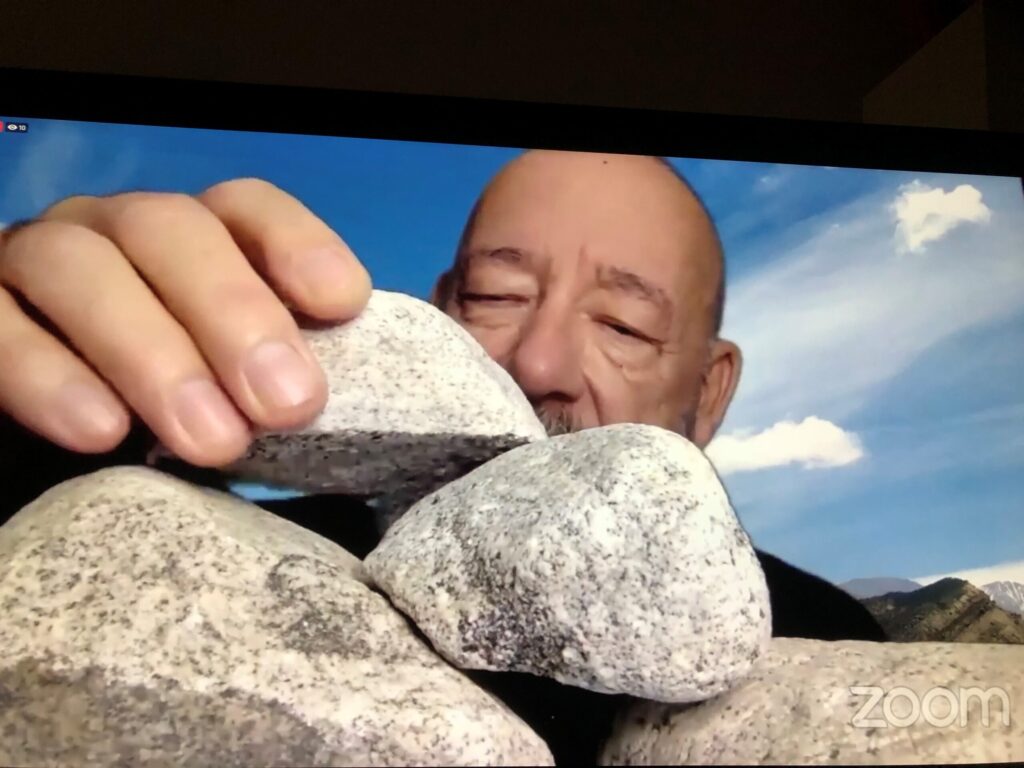Power of Culture Blog
Card to Culture Shout Out – Oct
We are grateful to these 50 cultural organizations committed to a more accessible cultural sector
Charles G. Baldwin, Program Officer

Out of my weekly Universal Participation (UP) Initiative office hours an Access response to technology and virtual programming is emerging. The question is “What is Access now?” and the answer seems to be a system that both anticipates and accommodates. I’ve collected the following practices for access in virtual spaces (which is by no means comprehensive with additions, suggestions, and resources always being gathered):
Clarity: Set up your intentions with an agenda or a know-before-you-go equivalent. Decrease anxiety and share the common practices for online spaces. Additionally, communications prior to your meeting/event can expedite time in the meeting/event. Set up outcomes and outline the agenda. Identify speakers or systems for participants to speak. Provide technical support for viewing, questioning, chatting, and follow-up.
Captions: Audio-to-text captions are the #1 access accommodation in the digital landscape – regardless of a request for the service. Audio-to-text software is improving, but a person providing the service is recommended. Labor will come with a cost. Record the meeting or event and provide a transcript afterwards. Always put out a request for accommodations with your invitation.
Layout: Captioning is regularly seen at the bottom of a monitor. If your presentation includes visual elements, remember to allow room for the captions on the screen and adapt the design to accommodate this service.
Seen/Heard: Offer the option of audio and/or video attendance at meetings, webinars, and events. By providing participants a choice to be seen and/or heard, you accommodate multiple scenarios in a work/life balance. With video calls going directly into our homes – roommates, pets, children, spouses, laundry, clutter, art, or vistas – are all open for inspection. Respect the attendance method.
Description: It should not be assumed that everyone can see or be seen. Asking for a self-description along with participants’ name, company, job, and pronouns can be a simple, common practice. Describe images involved in presentations. The description should mirror the simplicity or complexity of the image and the reason for its use. What are you communicating with the image? What point is illustrated by including the image?
Technology: Possession of a tablet or computer with access to broadband or wi-fi is the 2020 assumption. It is important to note who is NOT in the room. Could a conference call be as effective?
Website: Does your website follow Web Content Accessibility Guidelines (WCAG)? Can you discern information clearly and easily? Do your videos have captions and your photos have alt-text? Is the navigation clear and intuitive? You want to know what questions to ask the designers. Bring in people with disabilities to assess the state of your web presence.
Wellness: Fatigue, speculation, isolation, financial questions, disease, public health, violence, and political divisions can contribute to trauma and depression. Consider simple check-ins or one-on-ones with each other.
Get Physical: Use breaks in a meeting to share a physical gesture or movement or stretch. Strengthen a capacity for engagement.
Slow Down: We all want to “get there” but learning, sharing, and meeting in virtual spaces requires an adjustment to your projected outputs and outcomes. Set a pace that will accommodate all attendees. The need for a lesson, speech, or collaboration may be urgent, but if the information is voluminous, people can shut down and freeze if the pace is too quick. Be incremental in your approach; thorough to get it right.
Build: Now more than ever there is a need to connect with your peers, colleagues, and partners. Encourage the weaving of your networks with those with different interests, services, identities, or obstacles. Climate change, food insecurity, clean water, literacy; how can the diversity of social justice work support and enhance the cultural sector and provide the access to “connection” that is vital?
Access can be the system by which you assess your current situation and identify physical, cultural, social, and attitudinal barriers to participation. Activate the Disability lens for an intersectional approach to social justice.
Join the Universal Participation (UP) Initiative cohort for weekly office hours on Tuesdays from 9-10am. Contact Charles Baldwin to attend.
Mass Cultural Council’s UP Initiative seeks to realize the aspirations that are the foundation of the ADA (Americans with Disabilities Act) by providing systems, tools, and resources to creative workers at cultural institutions across the Commonwealth.